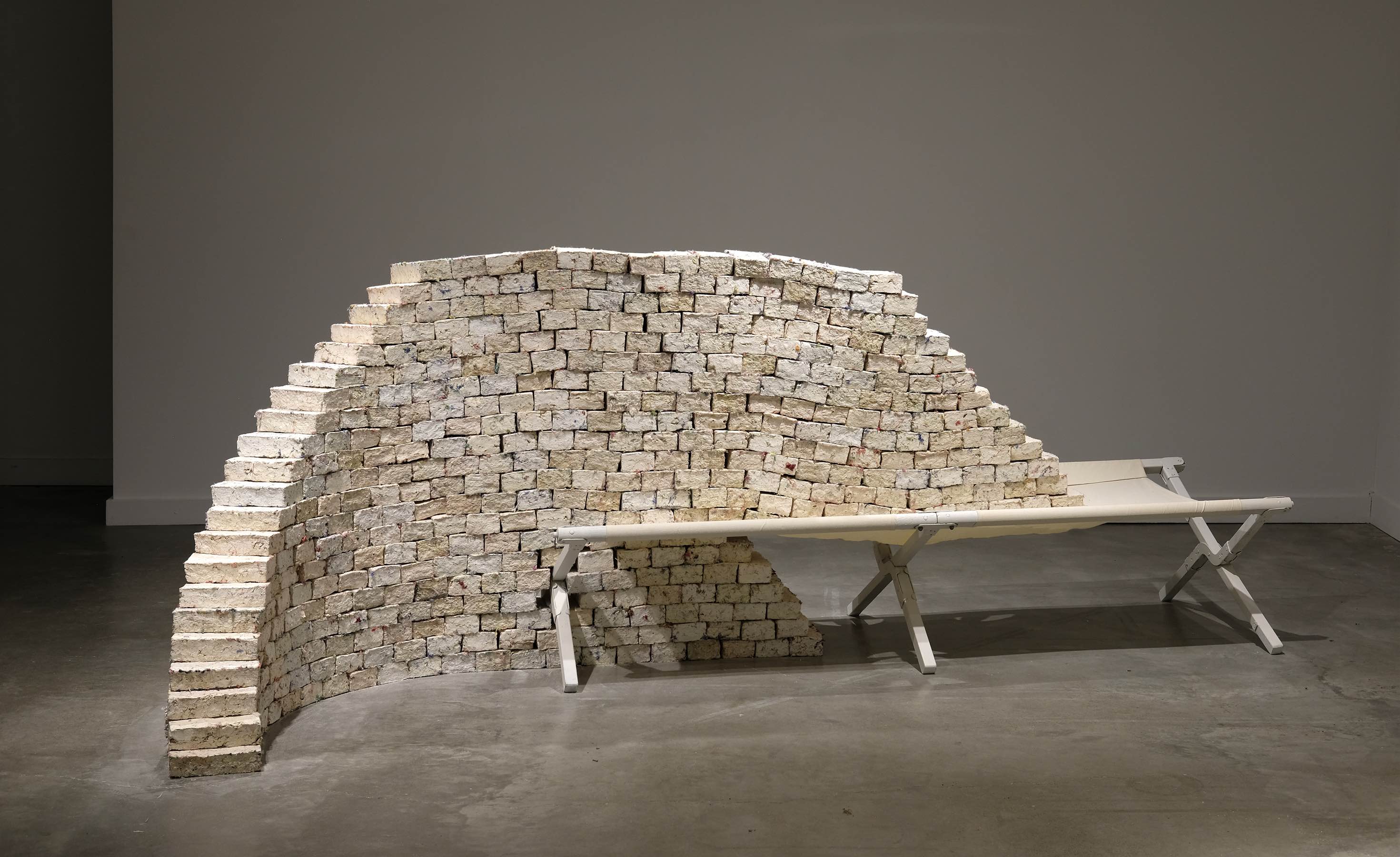
Contain Yourself by Allison Craver
October 19 – November 9, 2017
Reception: Thursday, October 19, 6 – 8 p.m.
Through processes relying on endurance and care, Craver attempts to unravel the seemingly disparate images and observations that compel her: scar tissue, heavy blankets, capillary action, the warmth and weight of our bodies. The sculptures presented in Contain Yourself are the result of her labor.
Artist Statement
I want to articulate how material and form have the potential to simultaneously elicit tenderness, familiarity, and alienation. Through material investigation and labor intensive processes, my thoughts become sculpture.
I find comfort in making, physically manifesting contemplation through labor. Though a gesture of generosity, the process is also compulsive, carrying the weight of an obligation. I am continuously navigating this dichotomy, negotiating the needs of my work with my own capacity to give; I empathize with the nurse. I feel deeply connected to and profoundly detached from the things I make, like a vital organ tethered outside of my body.
Bio
Allison Rose Craver (1988) grew up in East Aurora, NY. She received an MFA from Ohio State University in 2017, and holds a BFA from New York State College of Ceramics at Alfred University. Allison’s work is process driven, utilizing ceramics materials in conjunction with fiber and found objects to explore the nature of care and labor. She currently lives and makes in Saint Paul, MN.
Q&A with ALLISON CRAVER
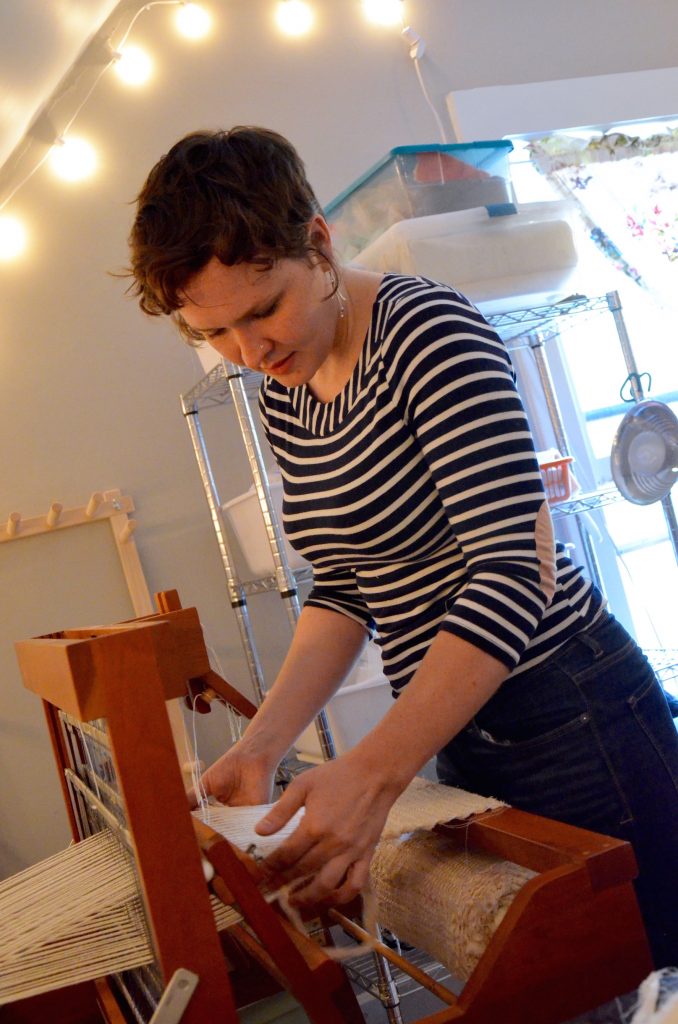
What prompted your interest in creating work about the body?
My interest in the body revealed itself over time. In the beginning it was not a conscious pursuit. As I generated more and more work, however, the body was an obvious thematic pattern. I choose to embrace it. My personal history includes caregiving, and I have been witness to a great deal of physical pain. So, it makes sense that my work would reflect this preoccupation.
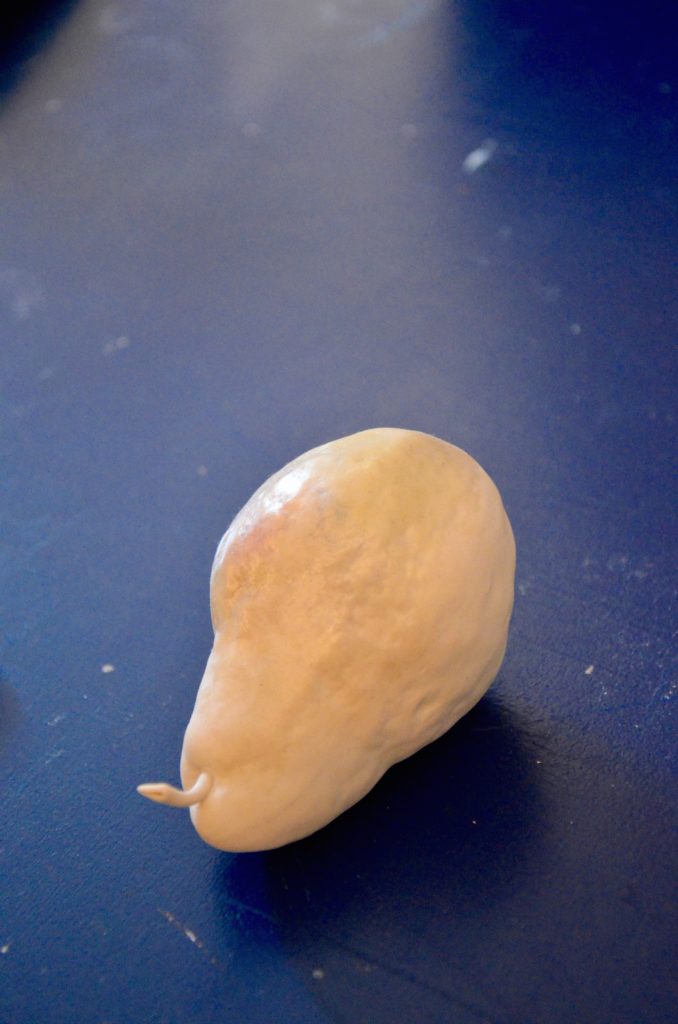
What is your process for choosing materials and the scale for a particular piece?
I usually start with a material that I am drawn to. Whether it is fiber or a specific clay body, I won’t understand its role in my studio practice until I have spent time playing with it and exploring all of its properties. This process could happen very quickly, or it might take many months of rumination. But eventually I will realize how the material relates to my conceptual interests, and a piece will follow. The process is very intuitive. In terms of scale, I often make work that relates to the size of my own body. I also appreciate making work that acknowledges my physical limitations; I am unlikely to make something that I can’t lift or move myself. I enjoy feeling autonomous, especially in the context of my studio.
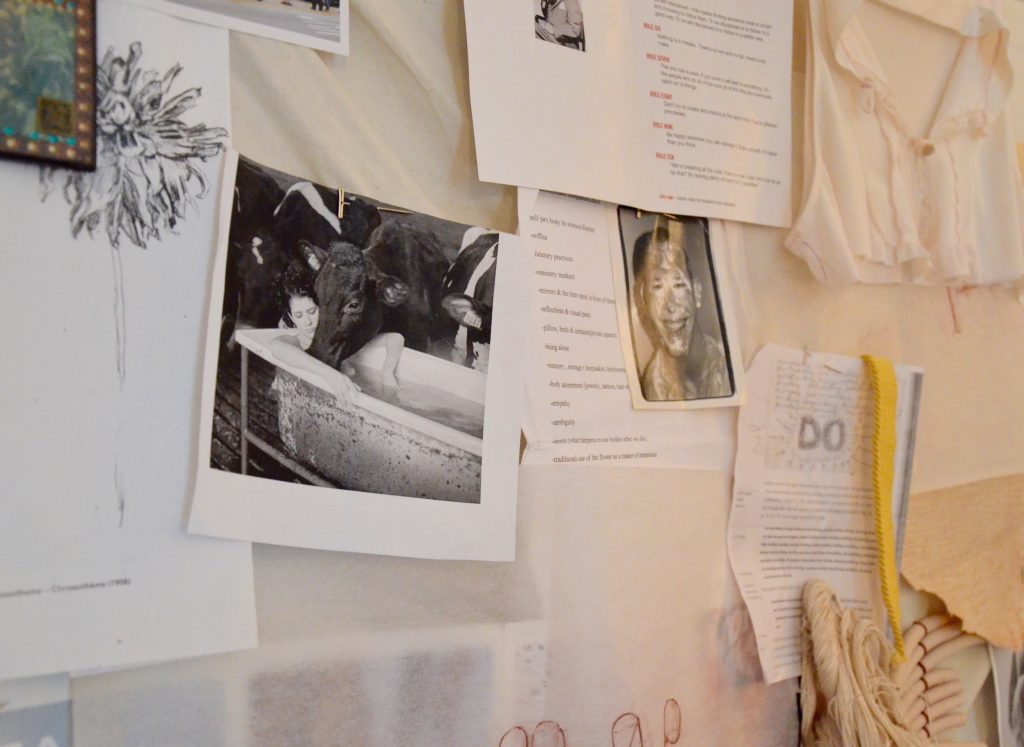
To what extent do you plan out a piece before executing it?
While I might plan something in the beginning, this is usually just a strategy to get myself started. As soon as I begin working I am looking for moments that hold potential, and I am always open to changing the piece. The work is the result of a process – I can’t relate to the idea of ‘executing’ a piece. It would be more accurate to describe the idea as fuel: it gets burned off.
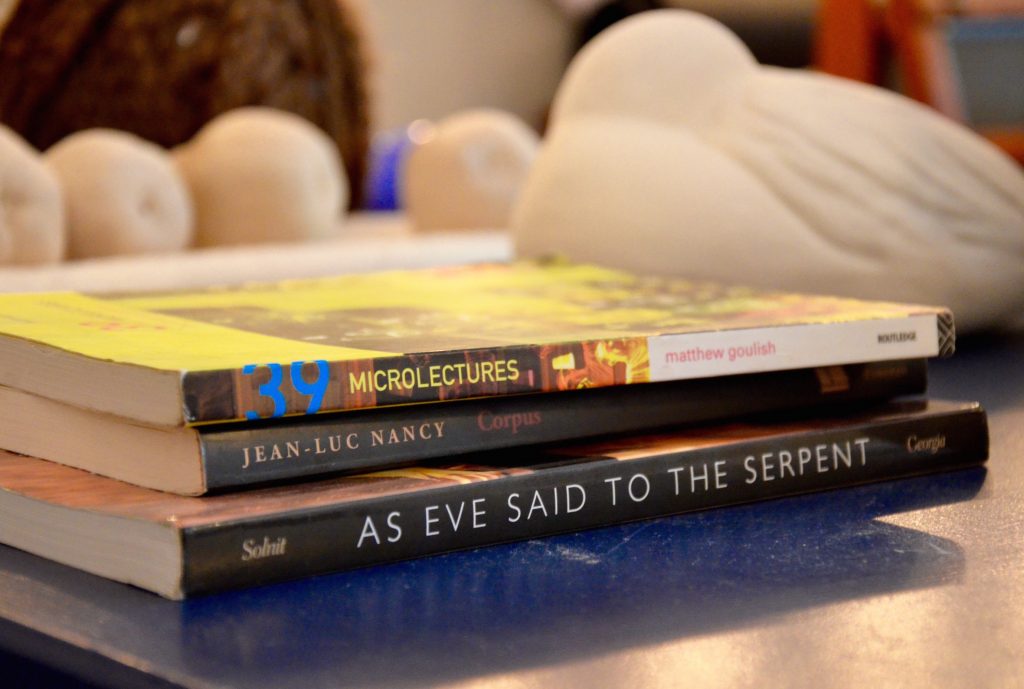
What research is informing your current work?
My work draws from my personal experiences and an eclectic mix of readings, observations, artworks, and stories. Research is important because it gives work context and keeps it relevant, but my work and research interests are not linear. I spent a lot of time in graduate school reading about nursing and other forms of caregiving. I was fascinated with Florence Nightingale.
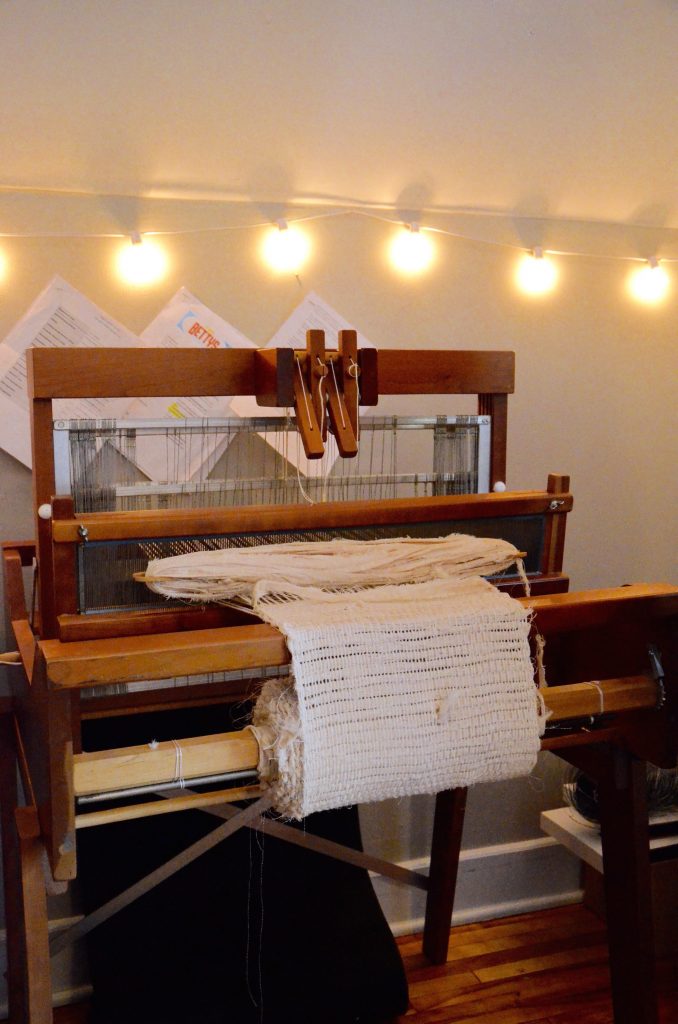
What have you learned in the process of creating this work?
Preparing for this show has been challenging! I just graduated from Ohio State
University and moved across the country, so I have been learning about the challenges of working, living, and art-making outside of a structured academic setting.
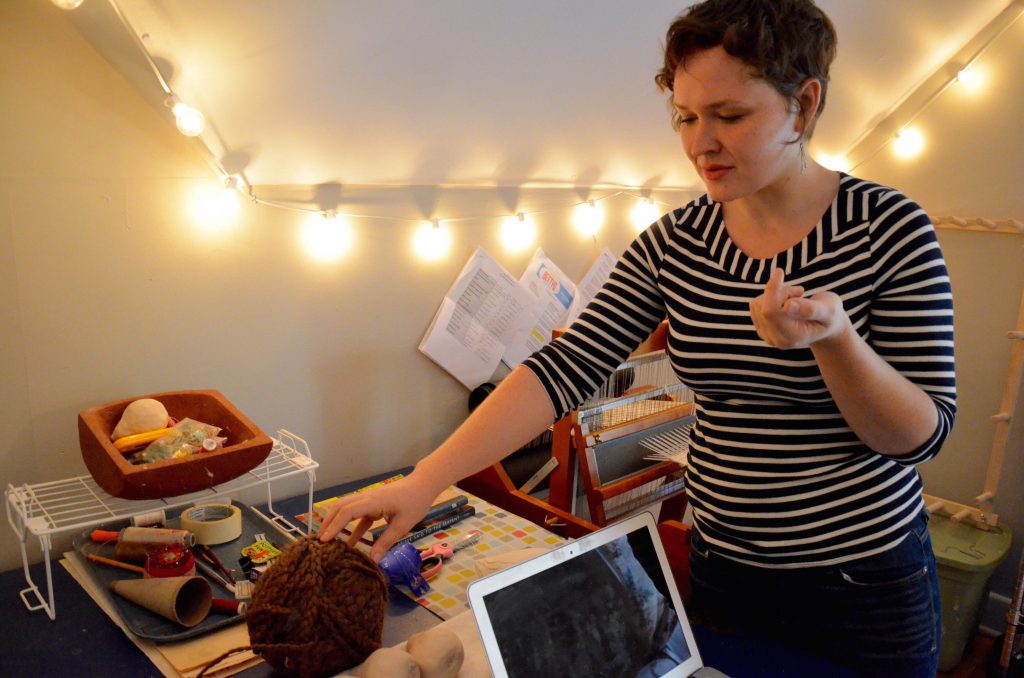
How do you go about titling your pieces?
I spend time reading the dictionary, looking up words that seem relevant to a particular piece. I like pulling apart definitions and finding linguistic connections. I try to keep titles simple and let the works speak for themselves.
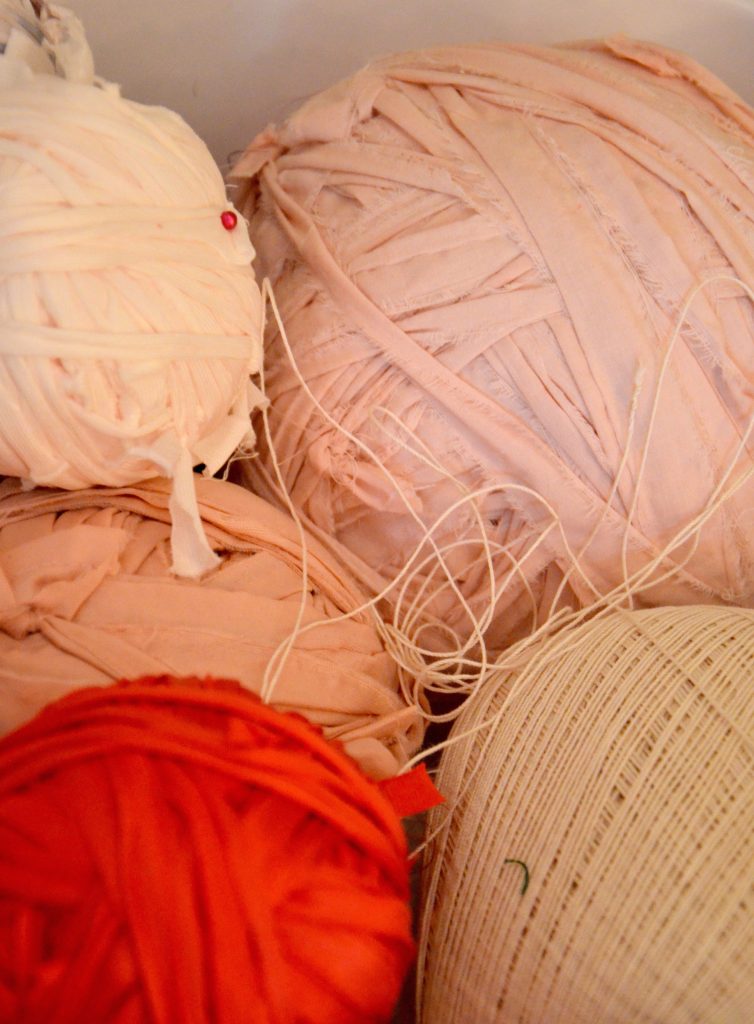
What is the most necessary and/or important item in your studio and why?
This is a really tough question! I can’t think of anything I couldn’t do without. I like to believe that my practice doesn’t rely on anything besides my hands and my curiosity.
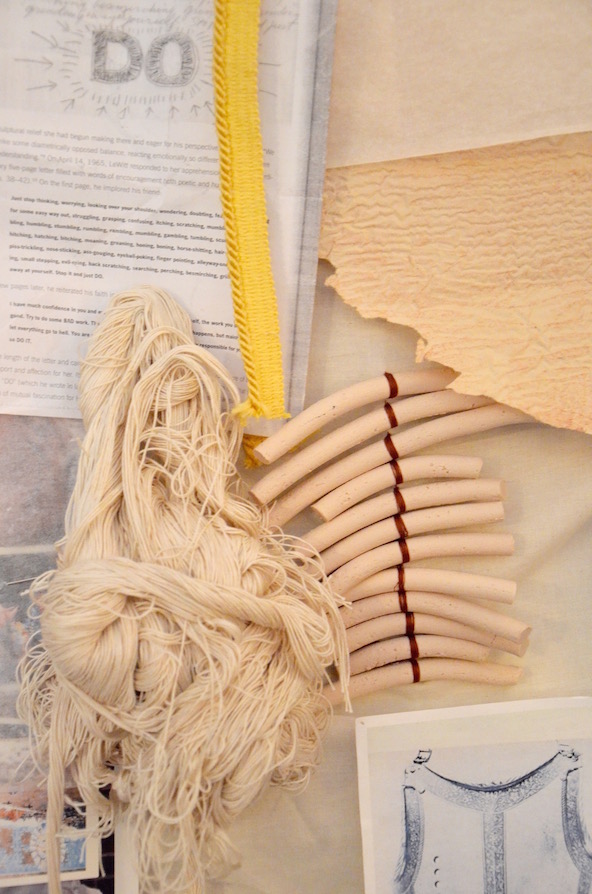
How do you seek inspiration for a new series?
It is difficult for me to break my work into series or discrete investigations. Each piece builds on the last, and the work is a continuum. When I need inspiration I usually don’t have to look further than my studio table. If things feel stale, spending time in the world and reading will help me see older work from a fresh perspective. I am always making work about the same things – always trying to answer the same questions. Again and again.
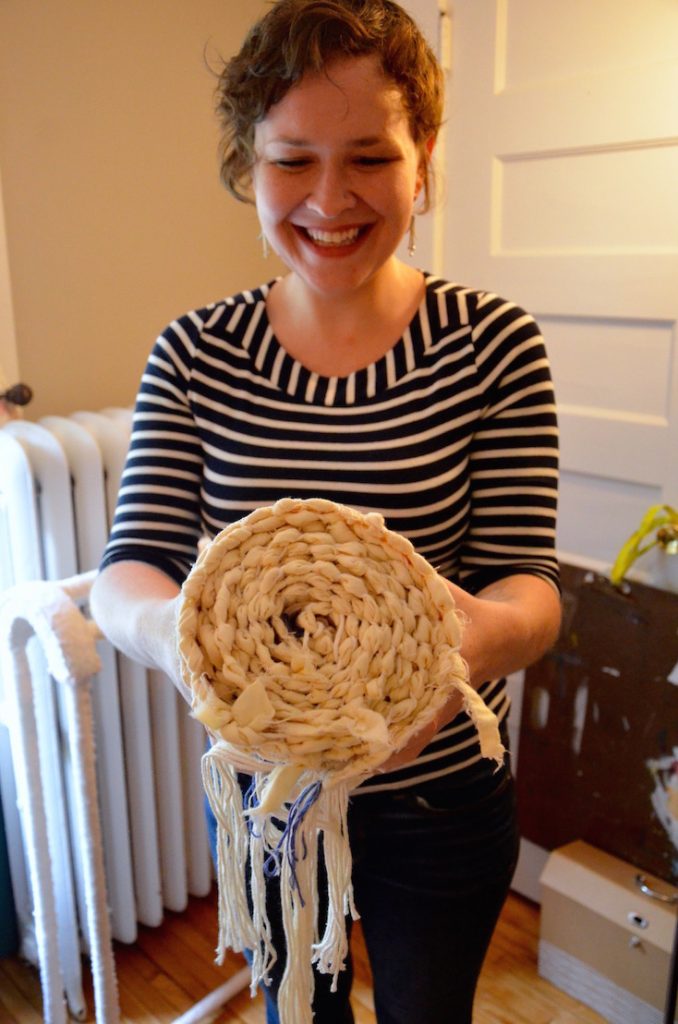
Questions by Gallery Assistant Kristen Holmberg
